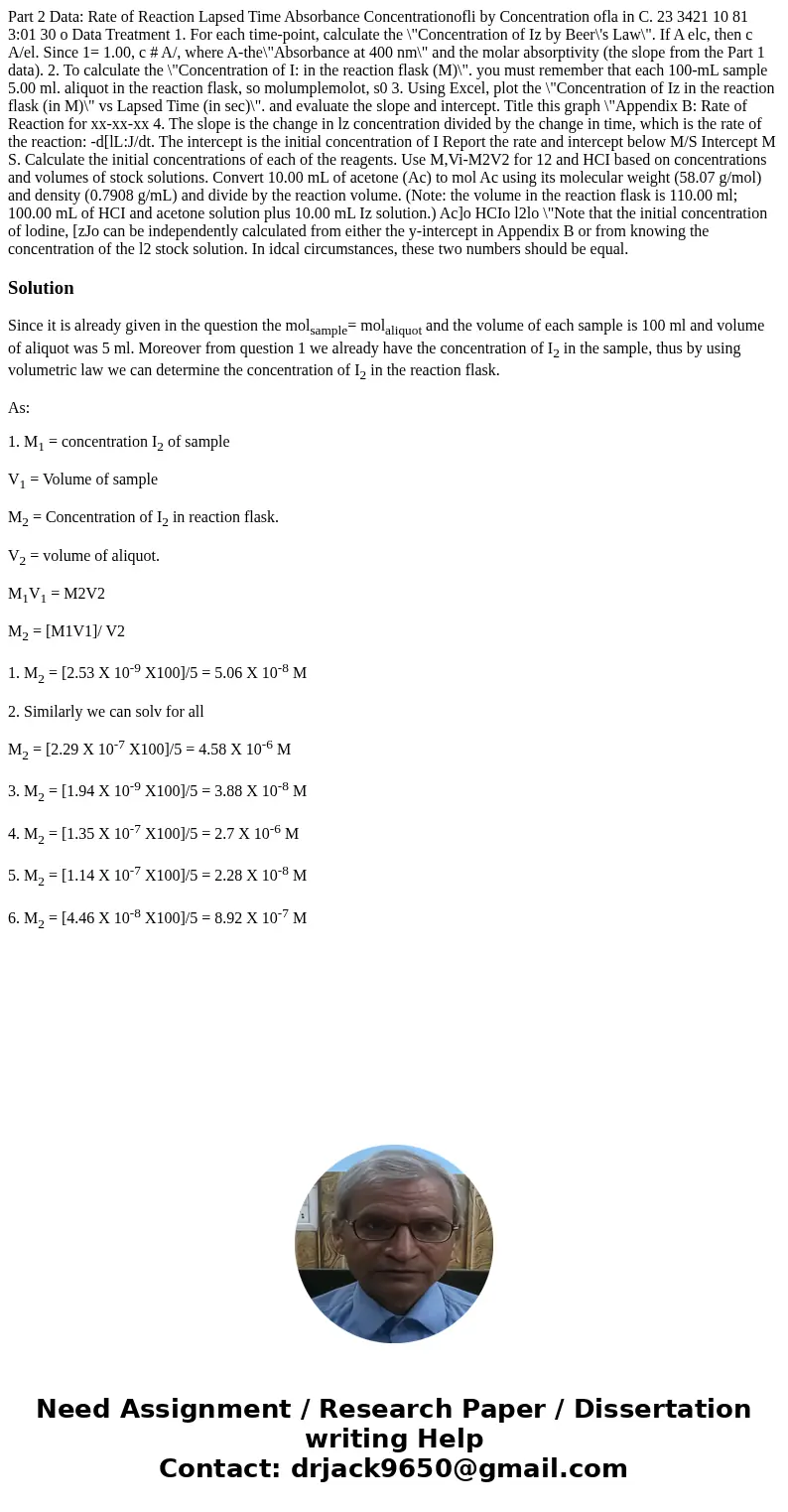Part 2 Data: Rate of Reaction Lapsed Time Absorbance Concentrationofli by Concentration ofla in C. 23 3421 10 81 3:01 30 o Data Treatment 1. For each time-point, calculate the \"Concentration of Iz by Beer\'s Law\". If A elc, then c A/el. Since 1= 1.00, c # A/, where A-the\"Absorbance at 400 nm\" and the molar absorptivity (the slope from the Part 1 data). 2. To calculate the \"Concentration of I: in the reaction flask (M)\". you must remember that each 100-mL sample 5.00 ml. aliquot in the reaction flask, so molumplemolot, s0 3. Using Excel, plot the \"Concentration of Iz in the reaction flask (in M)\" vs Lapsed Time (in sec)\". and evaluate the slope and intercept. Title this graph \"Appendix B: Rate of Reaction for xx-xx-xx 4. The slope is the change in lz concentration divided by the change in time, which is the rate of the reaction: -d[lL:J/dt. The intercept is the initial concentration of I Report the rate and intercept below M/S Intercept M S. Calculate the initial concentrations of each of the reagents. Use M,Vi-M2V2 for 12 and HCI based on concentrations and volumes of stock solutions. Convert 10.00 mL of acetone (Ac) to mol Ac using its molecular weight (58.07 g/mol) and density (0.7908 g/mL) and divide by the reaction volume. (Note: the volume in the reaction flask is 110.00 ml; 100.00 mL of HCI and acetone solution plus 10.00 mL Iz solution.) Ac]o HCIo l2lo \"Note that the initial concentration of lodine, [zJo can be independently calculated from either the y-intercept in Appendix B or from knowing the concentration of the l2 stock solution. In idcal circumstances, these two numbers should be equal.
Since it is already given in the question the molsample= molaliquot and the volume of each sample is 100 ml and volume of aliquot was 5 ml. Moreover from question 1 we already have the concentration of I2 in the sample, thus by using volumetric law we can determine the concentration of I2 in the reaction flask.
As:
1. M1 = concentration I2 of sample
V1 = Volume of sample
M2 = Concentration of I2 in reaction flask.
V2 = volume of aliquot.
M1V1 = M2V2
M2 = [M1V1]/ V2
1. M2 = [2.53 X 10-9 X100]/5 = 5.06 X 10-8 M
2. Similarly we can solv for all
M2 = [2.29 X 10-7 X100]/5 = 4.58 X 10-6 M
3. M2 = [1.94 X 10-9 X100]/5 = 3.88 X 10-8 M
4. M2 = [1.35 X 10-7 X100]/5 = 2.7 X 10-6 M
5. M2 = [1.14 X 10-7 X100]/5 = 2.28 X 10-8 M
6. M2 = [4.46 X 10-8 X100]/5 = 8.92 X 10-7 M

 Homework Sourse
Homework Sourse